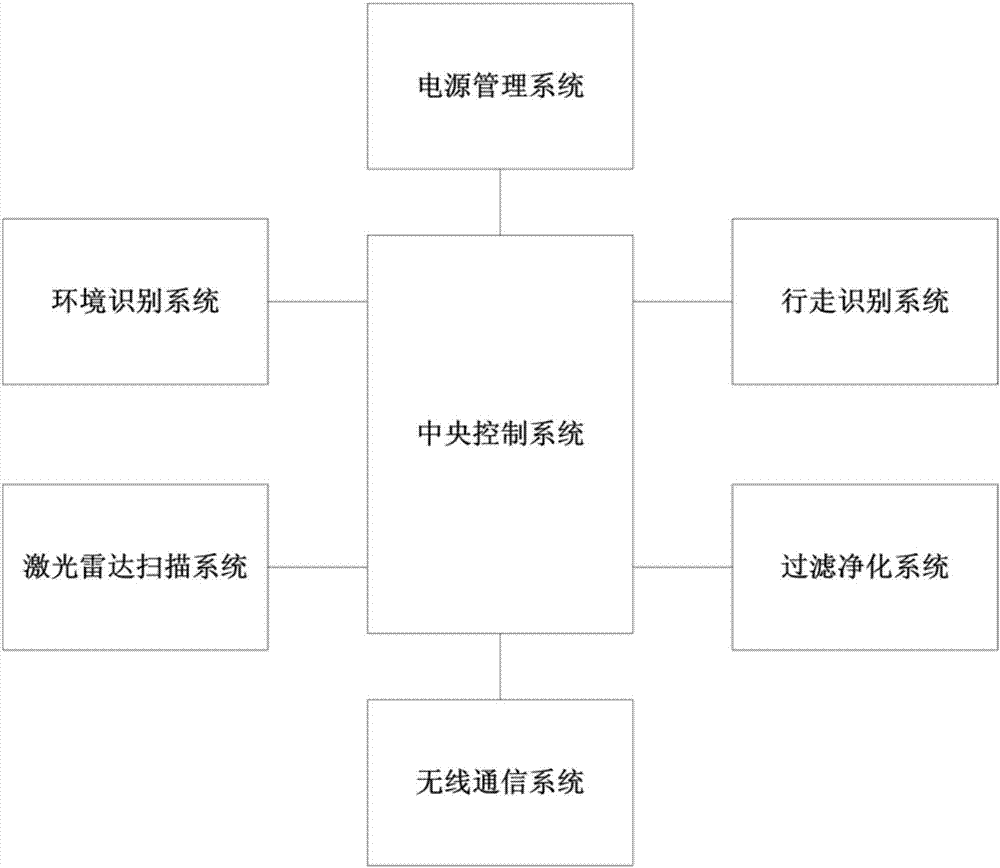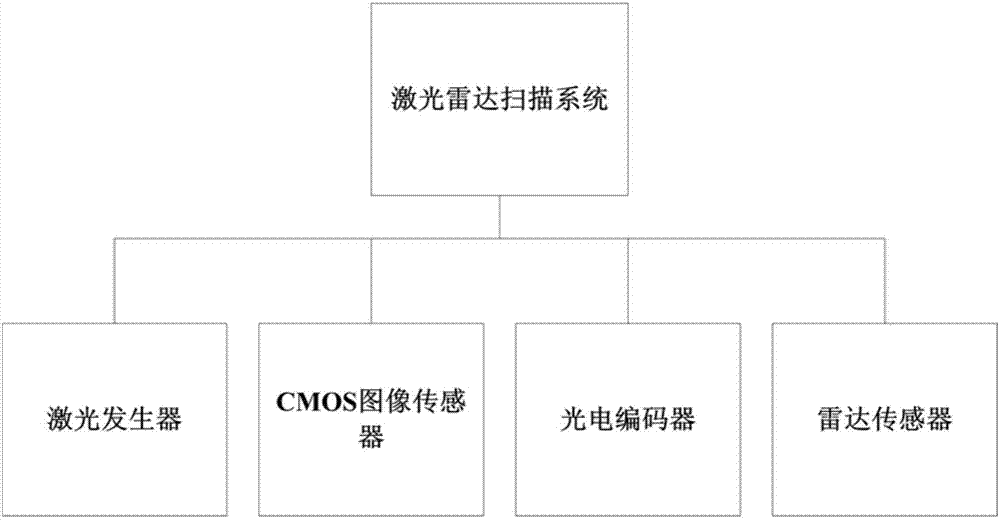Intelligent air purification robot
An air purification and robot technology, applied in the direction of instruments, non-electric variable control, two-dimensional position/channel control, etc., can solve the problem that the purifier cannot automatically identify the air quality, the air cannot be purified well, and the air purification is slow and gradual. problems, to achieve the effect of speeding up the air purification process, high air purification efficiency, and powerful functions
- Summary
- Abstract
- Description
- Claims
- Application Information
AI Technical Summary
Problems solved by technology
Method used
Image
Examples
Embodiment 1
[0047] Such as figure 1 As shown, an intelligent air purification robot includes an environment recognition system, a laser radar scanning system, a walking recognition system, a central control system, a filtration and purification system, a wireless communication system and a power management system;
[0048] The environmental recognition system monitors air changes in real time, including brightness sensing, odor sensing, odor sensing, and temperature and humidity sensing;
[0049] Lidar scanning system 360-degree parallel scanning of home environment, including laser generator, CMOS image sensor, photoelectric encoder and radar sensor;
[0050] Sensitive obstacle avoidance of walking recognition system, including drive motor, universal wheel, universal wheel sensor and down-view sensor;
[0051] The central control system centrally processes various signals such as sound, light, and electricity and issues corresponding instructions, including processors and memories;
[...
Embodiment 2
[0056] Such as figure 2 As shown, the environment recognition system includes brightness sensing, odor sensing, dust sensing and temperature and humidity sensing.
[0057] Brightness sensing adopts photoresistors to adjust the brightness of the robot’s LED indicator light according to the current environment, highlighting the display during the day and automatically displaying it at low light at night, so as to avoid affecting family rest;
[0058] Odor sensing adopts odor sensing sensor, intelligent smell to identify the odor in air pollutants;
[0059] Dust sensing uses a particle sensor to detect PM2.5, pollen and other particles in the air;
[0060] The temperature and humidity sensor uses a temperature and humidity sensor to detect indoor temperature and humidity in real time. Users can control humidification and cooling according to the detection data to maintain the most comfortable temperature and humidity.
Embodiment 3
[0062] Such as image 3 As shown, the lidar scanning system includes a laser generator, a CMOS image sensor, a photoelectric encoder and a radar sensor.
[0063] The laser generator emits 650nm red laser for linear ranging;
[0064] The CMOS image sensor exposes the laser signal and forms an image;
[0065] Photoelectric encoders convert optical signals into electrical signals;
[0066] The radar sensor rotates to obtain angular information.
[0067] Considering comprehensively the harm to human eyes, the ranging signal-to-noise ratio, and the anti-interference ability to ambient light, the laser transmitter of this embodiment uses a 650nm red laser.
[0068] The workflow of laser linear distance measurement is as follows: the laser transmitter emits 650nm red laser light, the photosensitive chip of the CMOS image sensor receives the reflected light signal and exposes the image, the photoelectric encoder converts the light signal into an electrical signal, and the memory stor...
PUM
 Login to View More
Login to View More Abstract
Description
Claims
Application Information
 Login to View More
Login to View More - R&D
- Intellectual Property
- Life Sciences
- Materials
- Tech Scout
- Unparalleled Data Quality
- Higher Quality Content
- 60% Fewer Hallucinations
Browse by: Latest US Patents, China's latest patents, Technical Efficacy Thesaurus, Application Domain, Technology Topic, Popular Technical Reports.
© 2025 PatSnap. All rights reserved.Legal|Privacy policy|Modern Slavery Act Transparency Statement|Sitemap|About US| Contact US: help@patsnap.com



